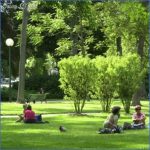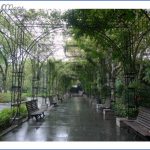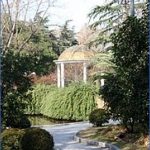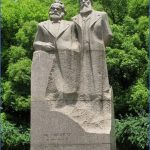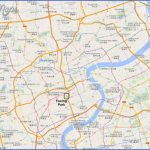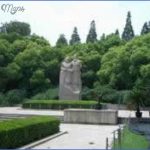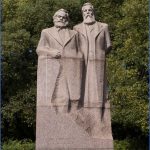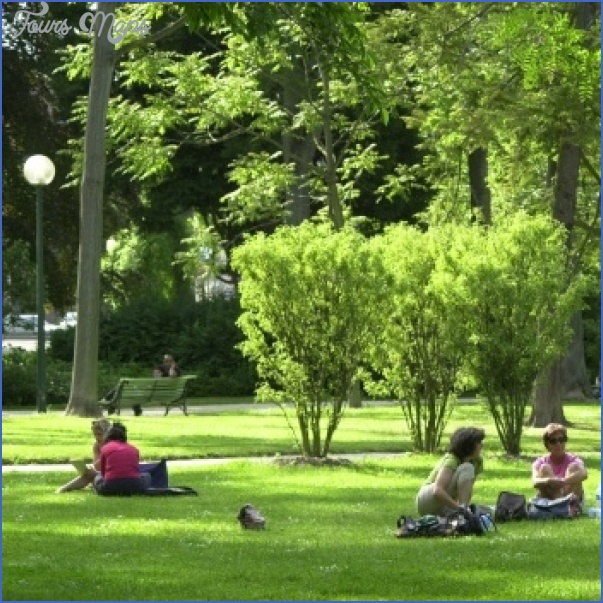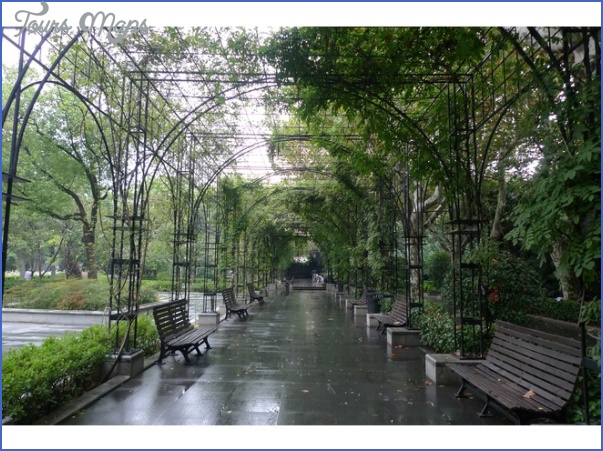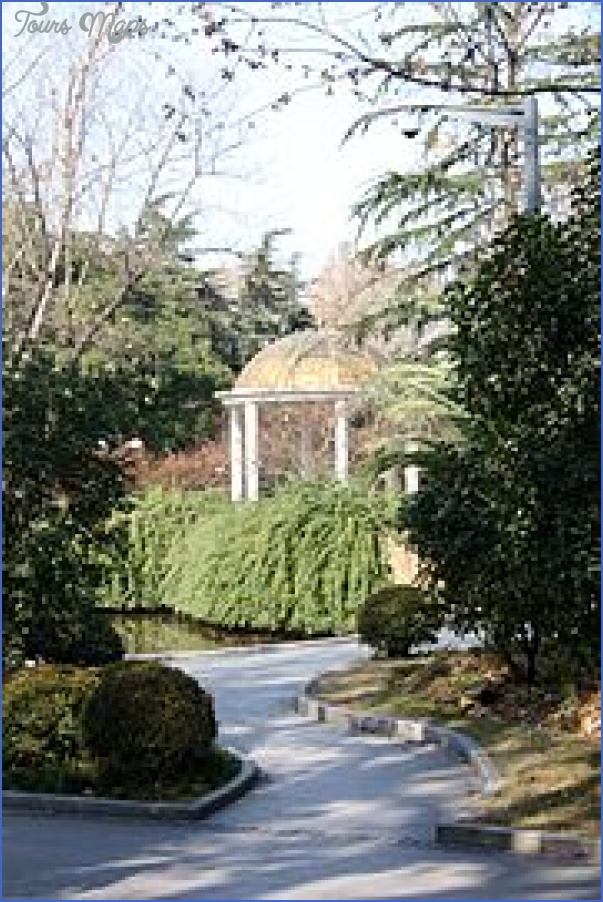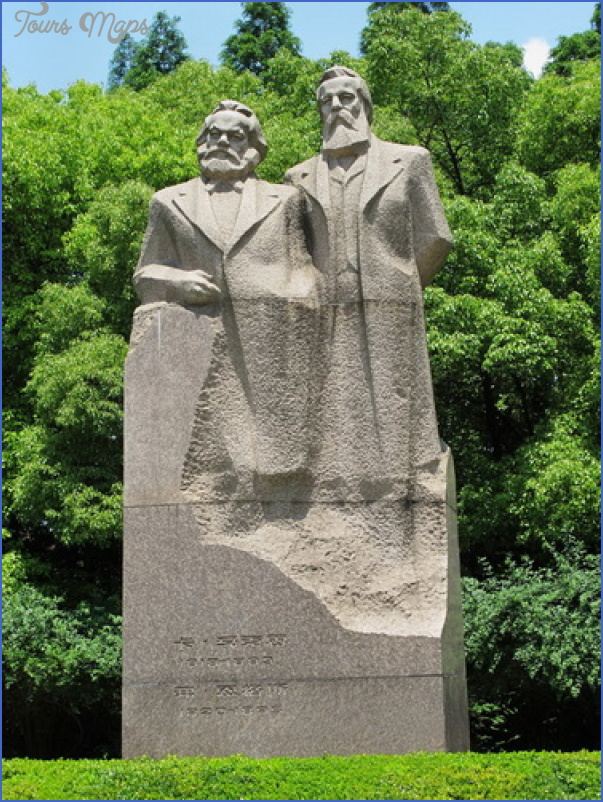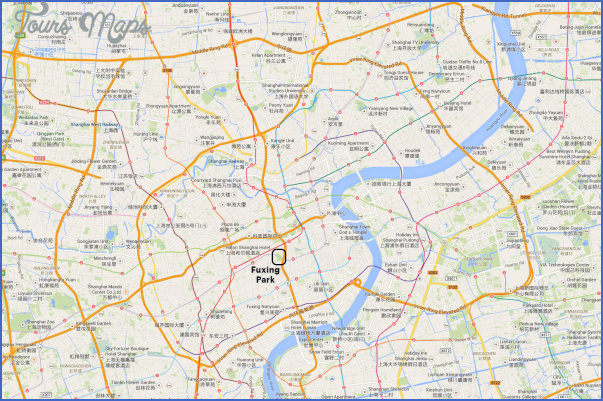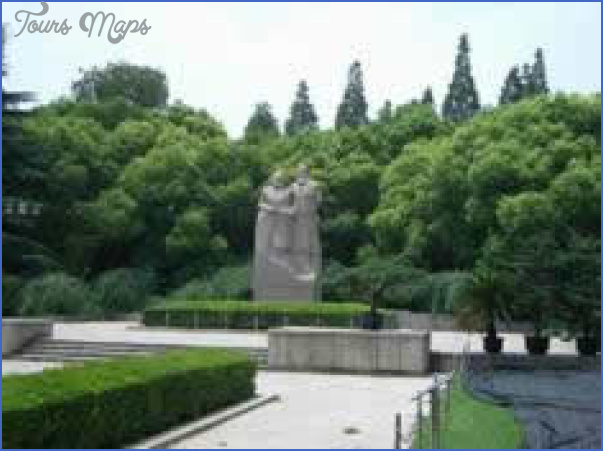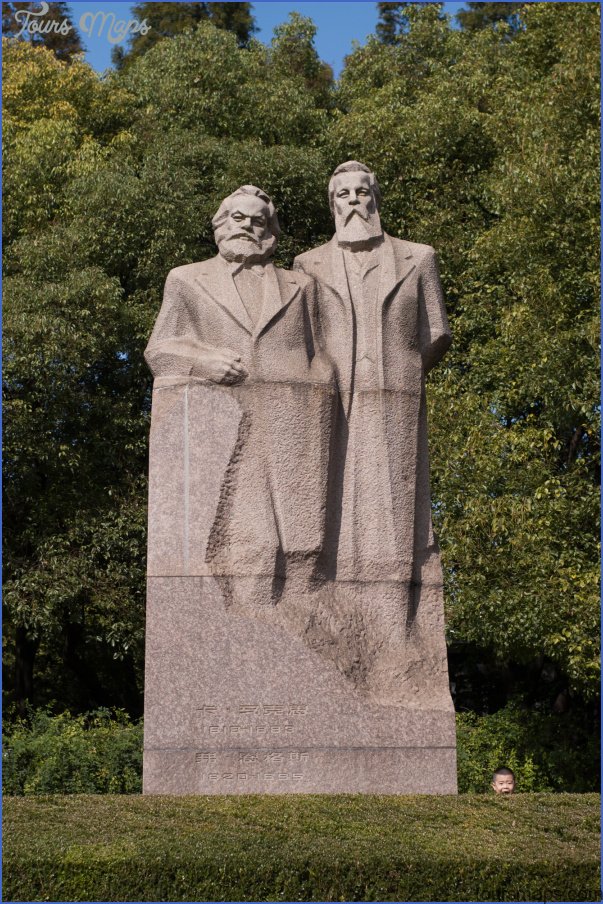The Fuxing Gongyuan Park in the south ofthe city was created in 1909 in the former French concessionary district. It is a favourite resting place, with trees providing shade.
Near the Fuxing Gonyuan Parkis the former residence of Sun-Yat-sen (see Famous People), situated at No’. 7 Xianshan Lu, where the statesman lived from 1920. The house, which has been converted into a small museum, still has the original furniture.
The Longhua Park lies in the south-west of the city. It contains a temple and a pagoda which reportedly date from the year 247, but have been destroyed and rebuilt many times. The present 40m/131ft high, seven-storey pagoda of brick and wood dates back to 977. Around every storey runs a balcony with a canopy-roof over it. The last time the various temple buildings were restored was at the end ofthe 19th c. Buddhist ceremonies are regularly held here.
The botanical garden, founded in 1954, is situated in the south ofthe city in Longwu Lu. Here can be seen reproductions of landscape scenes.
The church, built between 1906 to 1911 in Neo-Romanesque style, is situated to the south of Shanghai in the city district of Xujiahui near the municiple sports palace. It is the largest Catholic place of worship in Shanghai and the nave can accommodate 2500 people. Both of the bell-towers are over 50m/164ft high.
The temple (open: 8am-5pm), situated in the north-west of the city in Anyuan Lu, houses two Shakyamuni statues which the monk Huigen brought with him from Burma. In order to find a fitting place to accommodate the statues, he collected fundsfor building a temple at Jiangwan in the north-east of Shanghai. The work was completed in 1882 but the building was destroyed in 1911 during the revolution. Seven years later an undertaking was made to rebuild thetemple on a site nearer the old city, and this is how the present Jade Buddha Temple came into being. The building work took ten years to complete, from 1918-28. The temple is divided into three halls and two courtyards.
In the Hall of the Kings of Heaven stand statues of the four heavenly kings, a gilded Maitreya and a gilded Weituo.
The charming Hall of the Great Hero (Daxiong Baodian) has Buddhas of the past, present and future, and also eighteen Luohan figures.
The two Shakyamuni sculptures were carved from a single piece of white jade. The 1.9m/6ft high statue ofthe seated Shakyamuni can be found on the upper floor of the Wentang main hall, where a collection of Buddhist manuscripts is also kept. The small reclining Shakyamuni (barely 1m/3ft long), portrayed entering Nirvana, is situated in a building in the west courtyard ofthe temple.
The Zhenru Si Temple (1320) is situated in the north-western edge of Shanghai, nearthe Zhenru railway station. Ofthe original complex only the main hall of brick and wood is still preserved.
In the north of the city in Shanyin Lu is the Lu Xun (see Famous People) terrace, where the writer lived from April 11th 1933 until his death on October 19th 1936. In his study on the upper floor he translated, among other works, Gogol’s novel “The Dead Souls”.
In the Hongkou Gongyuan Park, to the north of the house where Lu Xun resided, is the poet’s tomb which was put up on the occasion of the twentieth anniversary of his death.
The 6.6ha/16 acre Garden of Natural Beauty in Nanxiang, a little village 8km/5 miles to the north-west of Shanghai, was laid out in the 16th c. It was extended in 1746, seriously damaged in 1937 and completely relaid in 1959.
Fuxing Gongyuan Park Map Photo Gallery
Maybe You Like Them Too
- The Best Cities To Visit in The World
- World’s 10 Best Places To Visit
- Coolest Countries in the World to Visit
- Travel to Santorini, Greece
- Map of Barbados – Holiday in Barbados

